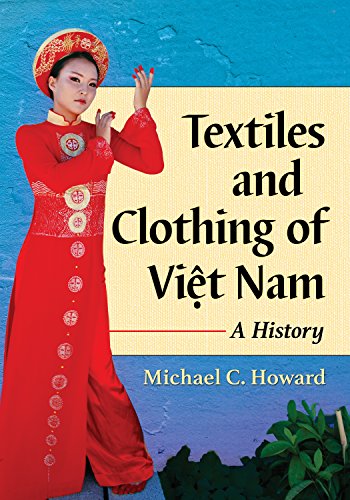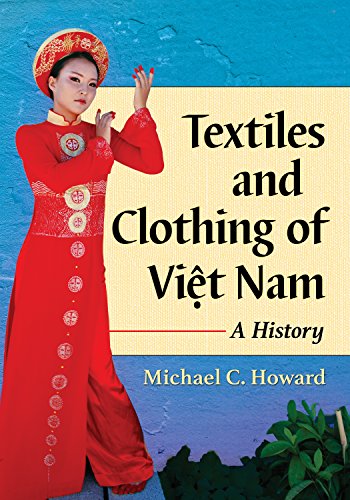Textiles and Clothing of Việt Nam: A History is a comprehensive and insightful book that delves into the rich heritage and evolution of textiles and clothing in Việt Nam. With a focus on the cultural and historical significance of this Southeast Asian country, the book explores the intricate techniques, vibrant patterns, and traditional designs that have shaped Việt Nam’s textile industry.
The Textiles and Clothing of Việt Nam: A History delves into the origins of textile production in Việt Nam, tracing its roots back to ancient times. From the indigenous tribes to the influence of Chinese and Cham cultures, the book examines the diverse influences that have contributed to the development of Việt Nam’s textile traditions.
Furthermore, the book highlights the role of textiles and clothing in Việt Nam’s social and economic history. It explores the significance of textiles as a form of artistic expression, as well as their importance in trade and commerce. Through vivid illustrations and detailed descriptions, the book offers a captivating journey through the different periods and styles of Việt Nam’s textile and clothing production.
In conclusion, Textiles and Clothing of Việt Nam: A History is an essential resource for anyone interested in the cultural heritage and artistic traditions of Việt Nam. It provides a comprehensive overview of the country’s textile industry, offering valuable insights into its historical, social, and economic significance.
Textiles and Clothing of Việt Nam: A History
Việt Nam, a country rich in cultural heritage, has a long history of textile production and clothing. For centuries, textiles have played a significant role in the daily lives of the Vietnamese people, representing their traditions, beliefs, and social status. The history of textiles and clothing in Việt Nam is a fascinating journey that reflects the country’s cultural diversity and artistic excellence.
Traditional Textiles: A Reflection of Cultural Heritage
Traditional textiles in Việt Nam are more than just pieces of fabric; they are a reflection of the country’s cultural heritage. Each region of Việt Nam has its own distinctive textile traditions, which are passed down from generation to generation. From the vibrant silk brocades of the ethnic minorities in the mountainous areas of the north to the intricate patterns of the Cham people in the central region, traditional textiles embody the unique identities of various communities.
These textiles are often created using traditional techniques such as weaving, batik, and embroidery. Natural materials like silk, cotton, and hemp are commonly used, and natural dyes derived from plants, minerals, and insects are employed to create a wide range of colors. The patterns and motifs found on traditional textiles often carry symbolic meanings, representing elements of nature, mythology, or daily life.
In addition to their cultural significance, traditional textiles also hold economic value. Many ethnic minority communities in Việt Nam rely on textile production as a source of income. Through their intricate craftsmanship, these communities have managed to preserve their cultural heritage while also contributing to the country’s economy.
As Việt Nam continues to modernize, traditional textiles and clothing face challenges in maintaining their relevance in contemporary society. However, efforts are being made to promote and preserve this rich cultural heritage, ensuring that future generations can appreciate the beauty and significance of Việt Nam’s textiles and clothing.
Textiles and Clothing in Vietnam: A Brief History
ASIN: B01K81RRTC
Publisher: McFarland; Illustrated edition (August 1, 2016)
Publication date: August 1, 2016
Language: English
File size: 12283 KB
Text-to-Speech: Enabled
Screen Reader: Supported
Enhanced typesetting: Enabled
X-Ray: Not Enabled
Word Wise: Enabled
Sticky notes: On Kindle Scribe
Print length: 228 pages



